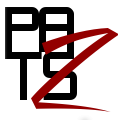Project Allocation & Tracking System
Investigation into the policing tactics of the riots in 2011
James M MacKenzie
03/05/2013
Supervised by Roger M Whitaker; Moderated by Peter Burnap
This project is to develop a requirements model for Cardiff Univeristy coffee shops. Built for the students and staff. This model can be used to drive and inform change within the Catering and Bars department so that they provide better service in their coffee shops. To do this, a number of election techniques have been defined and developed.
Initial Plan (22/10/2012) [Zip Archive]
- 1-Project_Plan_-_Google_Drive.pdf
- Appendix_1-Requirements___Modeling_FYP_Plan.pdf
- Archive_1-Requirements___Modeling_FYP_Plan1.html.zip
Interim Report (14/12/2012) [Zip Archive]
- 1-InterimReport.pdf
- Appendix_1-Appendix_1.pdf
- Appendix_2-Appendix_2.pdf
- Appendix_3-Appendix_3pdf.pdf
- Appendix_4-Appendix_5.pdf
Final Report (03/05/2013) [Zip Archive]
- 1-Finalreport.pdf
- Appendix_01-Appendix_1.pdf
- Appendix_02-Appendix_2.pdf
- Appendix_03-Appendix_3.pdf
- Appendix_04-Appendix_4_Q3.pdf
- Appendix_05-Appendix_4_Q4.pdf
- Appendix_06-Appendix_4_Q5.pdf
- Appendix_07-Appendix_4_Q6_.pdf
- Appendix_08-Appendix_4_Q7.pdf
- Appendix_09-Appendix_4_Q8.pdf
- Appendix_10-Appendix_5.pdf
- Appendix_11-Appendix_6.pdf
- Appendix_12-Appendix_7.pdf
- Appendix_13-Appendix_8.pdf
